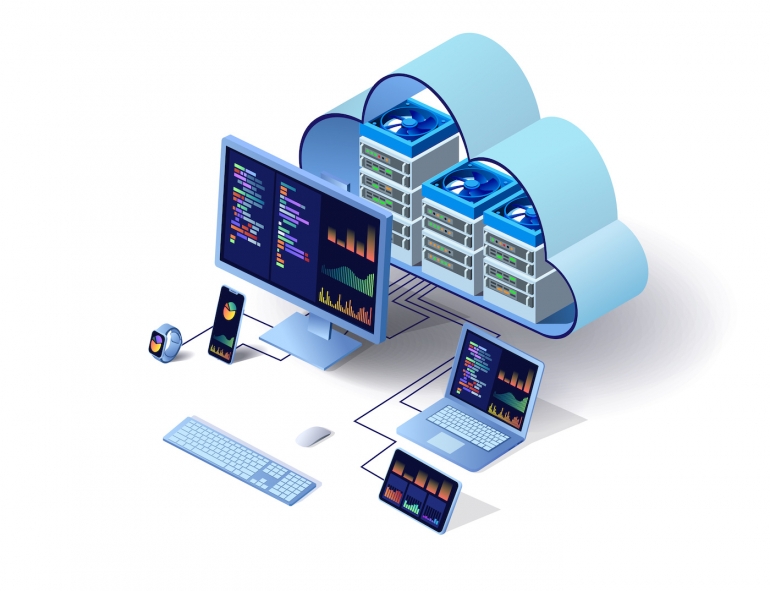Cloud computing currently has a positive global market outlook, but some of its inadequacies may render it redundant in the future.

The emergence of cloud computing created a sudden shift from the traditional ways enterprises think about IT resources. This shift caused a swift surge in the number of organizations adopting cloud computing. Currently, the global cloud computing market is projected to grow from $480 billion in 2022 to $1.7 trillion by 2029, at a CAGR of 19.9% in the forecast period.
However, despite this positive global market outlook, cloud computing has not been sufficient in handling the new changes holding sway in the technology industry. For example, new technology trends such as the Internet of Things, Industry 4.0, and the growing application of artificial intelligence and machine learning in smart devices and smart homes have continued to render cloud computing more redundant in many areas, exposing some of its inadequacies.
What is cloud computing?
Cloud computing is a computing model where computing resources such as databases, servers, storage, software, networking, intelligence and analytics are delivered over the internet. It’s the type of computing where businesses do not need to own their data center or computing infrastructure to access or have these computing resources running.
SEE: Hiring Kit: Cloud Engineer (TechRepublic Premium)
While this form of computing offers businesses the flexibility to deploy resources according to their business goals, cloud computing has inherent problems. If you’re considering a cloud migration anytime soon, check out some of these disadvantages of cloud computing before making such a move.
Disadvantages of cloud computing
Occasional downtime
The nature of cloud computing makes it vulnerable to server downtime. During downtime, customers are forced to wait until the connection is restored before they can access the service. Depending on how long the downtime lasts, this situation can cause critical damage to businesses.
For example, businesses have experienced data failure, loss of customers and revenue due to downtime. A 2020 Statista survey revealed that 25% of respondents across the globe reported that average hourly downtime costs their businesses between $301,000 and $400,000. When you multiply this number by how many times this download occurs in a year, you will understand why downtown is a critical issue with cloud computing.
A case of how downtime can affect cloud-driven businesses was the 2020 blackout of all Google services that lasted for over an hour, leaving millions of businesses at a halt while the outage lasted.
Limited flexibility and control
Cloud computing is run in a way that denies business owners the ability to manage and monitor the entire cloud infrastructure. This situation often leaves businesses with little or no control over their data. In addition, depending on the cloud service provider’s management policies and end-user license agreement, customers may also have limitations on how they can handle their deployments.
In most cases, when such policies are in effect, customers will have limited access to what tool, application and data they can deploy on the cloud provider’s server.
Vendor compatibility issues
The transition from one cloud provider to another in a competitive cloud computing environment has been a major bane of cloud computing. Although while subscribing to a cloud provider, businesses are assured of how seamless it is for them to migrate to other cloud service providers, experiences have shown that this is not always the case.
There are issues with compatibility as some applications working properly in one cloud platform may not be compatible with another provider. This risk makes a lot of people apprehensive about migrating their resources to other cloud providers.
Security and threats
Although most cloud providers apply several security measures to keep hackers away from their cloud infrastructure, the incidence of data breaches indicates that cloud computing is still vulnerable to attacks. This makes storing business-critical files and crucial data in virtual data centers a potential risk.
For instance, Microsoft revealed in 2021 that due to a major flaw in its flagship Azure Cosmos DB database, customer information may have been exposed to hackers, which gave hackers access to read, change or delete data saved in the cloud. Furthermore, results from a Fugue survey suggest that about three in four teams working in a cloud environment experience about ten incidents of potential hacks due to poorly configured cloud systems.
Although these threats do not make cloud computing entirely insecure, it only shows a higher chance of successful attacks or data breaches when there is human error in cloud setup and issues with endpoint configurations.
Latency issues
Cloud latency describes the time it takes a cloud service operator to respond to a client’s request. Cloud service latency is a serious issue in cloud computing, especially now that the world is witnessing exponential growth in data generation and connected devices.
With more data generated from these devices, there is a potential growth in the incidence of cloud service latency. The time it takes data to travel to cloud hosting centers for computation processes and back to the client side affects cloud computing. This is why modern IoT devices and smart industries are adopting edge computing as a computing model.
It is uneconomical
Due to the high volume of data and files stored in the cloud, users require a large amount of bandwidth to access these data constantly.
Although many cloud service providers have remodeled their payment to reflect the pay-as-you-use model, it still does cost a lot to maintain a connection to cloud services. As a result, maintaining this level of bandwidth for continued access to cloud resources can be capital intensive, and not too many start-ups can afford that.
